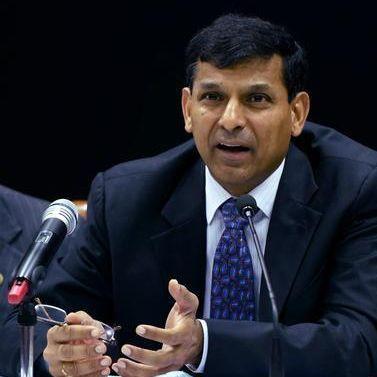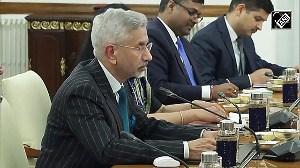After Raghuram Rajan leaves, the world for the succeeding RBI governors will be distinctly different, says A K Bhattacharya.
 Much attention has been paid of late to the nature of the differences that Reserve Bank of India Governor Raghuram Rajan has had with the government and its senior representatives in the last year or two.
Much attention has been paid of late to the nature of the differences that Reserve Bank of India Governor Raghuram Rajan has had with the government and its senior representatives in the last year or two.
In the midst of such controversies, it has not yet been fully recognised that the three-year tenure of the current RBI governor, which ends in September, has also seen one of the most eventful periods for the central bank, changing quite fundamentally its relationship with the government and its jurisdictional power.
There have been past governors who have brought about major changes in the functioning parameters of the RBI.
In recent times, since the reforms were initiated in 1991, one of the first big changes was the agreement concluded by the government and the RBI to put an end to the issuance of ad hoc treasury bills. That was in 1997.
The ad hoc treasury bills were instruments to monetise the government's deficits.
Their phase-out led to a more transparent and accountable system of government borrowing from the market to bridge its deficit. It also brought in greater fiscal discipline.
Then, there were governors who put in place a new frequency of monetary policy reviews - instead of just twice a year the frequency got better.
Similarly, the interest rate instrument used for sending out monetary policy signals also was changed - from the bank rate to the repo rate.
And recently, a new mechanism was created to facilitate coordination among financial sector regulators including the RBI.
There were some tense moments, when the new coordinating mechanism was being set up as it was perceived to be the government's way of placing the RBI under greater scrutiny and, more worryingly, of robbing the central bank of its unique position among all financial sector regulators - a status that was somewhat restored after more consultations.
In that respect, the tenure of Mr Rajan was not completely free from similar controversies.
In the early part of his tenure, the finance ministry was not always seen in sync with the central bank and it often appeared to have acted to undermine the latter's independence.
There were also instances of the central bank giving some tense moments to the mandarins in North Block, which houses the finance ministry.
For instance, once a crucial meeting in the RBI, requiring the presence of the finance ministry, was scheduled too close to the presentation of the Union Budget.
That riled North Block officials no end and their relationship with the central bank remained frosty, though the RBI meeting was later rescheduled to defuse the tension.
After some bureaucratic reshuffle in North Block, the relationship got better and remained virtually tension-free in the latter half of Mr Rajan's tenure, so much so that the finance ministry and the RBI started talking the same language, allowing each other space and freedom of action.
What roiled the situation for Mr Rajan is not what the finance ministry did to him, but the many barbs that were aimed at him by Bharatiya Janata Party leader Subramanian Swamy.
But these differences and the occasional barbs apart, the tenure of Mr Rajan should be remembered for the manner in which the relationship between the RBI and the finance ministry, which so far had remained relatively vague, was codified.
The conclusion of the Monetary Policy Framework agreement in February 2015 was a landmark development.
It imposed on the RBI the obligation to meet an inflation target.
This also heralded the concept of inflation targeting based on retail inflation, measured by the consumer price index.
Earlier governors would follow the wholesale price index and a few other yardsticks, including core inflation, to determine its monetary policy stance.
A year later, the Reserve Bank of India Act was amended to give the new monetary policy framework the much-needed statutory sanction.
The amended law has now envisaged the creation of a six-member monetary policy committee, chaired by the RBI governor.
With three independent members, to be chosen by the government, and three members from the RBI including the governor, the exercise of monetary policy reviews will now be undertaken through a committee system.
Yes, there would be a voting mechanism to arrive at a decision on the monetary policy stance on the basis of a majority view.
And if there is no majority view, the governor will have the privilege of a second vote, which will act as a casting vote to break the deadlock.
The monetary policy committee has not yet been formed.
It is possible that Mr Rajan's bi-monthly monetary policy statement on August 9 will be framed before the committee is in place.
But it is only a matter of time that the RBI's monetary policy stance, most likely from October onwards, would be framed under the new system, where the new governor will not have the kind of freedom which his predecessors have been enjoying.
A committee will be in place and the governor's power of the casting vote will also be limited by its very nature.
After Mr Rajan leaves, the world for the succeeding RBI governors will be distinctly different.
They will not have to worry or even quarrel over what their powers are and whether those are being usurped by the finance ministry.
The law is now in place, putting an end to all such doubts and turmoil.
Mr Rajan is the last governor to have presided over a framework where interest rates could be set in the way he or his predecessors did.
That system is a thing of the past. All new RBI governors will now have to deal with the committee system, perhaps giving up many of the powers their predecessors enjoyed.
The question is: Will Mr Rajan inaugurate the new system as well in his last monetary policy statement next month?










